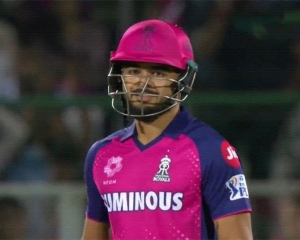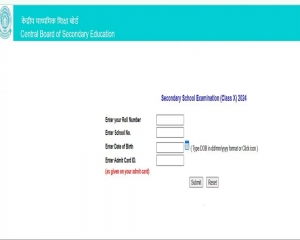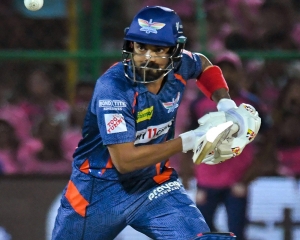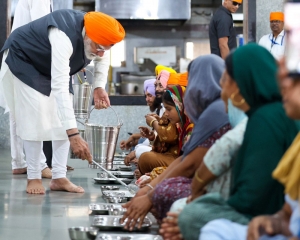From traditional Indian classical dance forms to contemporary global dance phenomena, dance continues to inspire, heal and unite communities
On April 14 last year, history was made in Assam, India, as a Guinness World Record was set for the largest gathering of Bihu dancers. Over 11,000 dancers from different communities and backgrounds came together to perform the traditional dance of Assam, watched live by Prime Minister Narendra Modi. It was a spectacular display of cultural diversity and unity. This event was a shining example of how cultural diversity can bring people together and foster a sense of emotional bonding and appreciation of one another’s culture and traditions.
More recently as part of the ‘Raag Seva’ in a breathtaking display of timeless grace and unwavering passion, the 90-year-old actor-dancer and Padma Vibhushan awardee Vyjayanthimala Bali, enchanted spectators with her ethereal Bharatanatyam performance in Ayodhya. In this rich mosaic of human expression, dance emerges as a timeless gem, casting its spell across generations and captivating hearts through the ages. Beyond mere movement, it embodies a symphony of creativity, infusing the soul with unbridled joy. A graceful interplay of rhythm and emotion, it offers solace from the burdens of modern life, intertwining threads of happiness into the fabric of existence.
Welcome to the rhythm of life, as we celebrate the ‘International Dance Day’ on April 29th every year, since 1982. Dance helps to change lives. The ‘Navras’, which is used to express joy, sadness, love, anger and many other emotions, is a way of celebrating life and creating a sense of community.
This Day serves as a platform aimed at fostering awareness regarding the intrinsic value of dance and facilitating the widespread promotion of the dance community’s endeavours. Central to its mission is the aspiration that Governments and influential figures will recognize the significance of dance and extend support towards its cultivation.
We are all aware of Yo-Yo Ma’s ‘Silk Road Ensemble’, a musical group founded by the cellist Yo-Yo Ma, where musicians from China, Iran, India and Spain come together and use their music to create a bridge between cultures and promote understanding between people from different backgrounds. Through cultural collaboration, this is a forum for the exchange of ideas, tradition and innovation across borders.
Also, the ‘OneBeat’ initiative, which brings together musicians from around the world to collaborate and create new music - was funded by the U.S. Department of State - aims to promote cultural exchange and create a global community of musicians. ‘OneBeat’ has brought together musicians from countries such as Syria, Russia and Cuba, to name a few, not only providing a platform for musicians to share their music but also creating new collaborations that transcend cultural and linguistic barriers.
Dance also helps in promoting intercultural dialogue. Dance companies worldwide come together to create new works that reflect their cultural traditions and explore common themes. One such example is the ‘Alvin Ailey American Dance Theater’, which has been promoting diversity and inclusion through dance for over 60 years. The company’s performances celebrate the African-American cultural experience and explore universal themes such as love, loss and identity.
Not only this, the ‘National Ballet of Cuba’ is a dance company that promotes intercultural dialogue through its performances. Founded in 1948 by Alicia Alonso, one of the most famous ballerinas of the 20th century, it is known for its unique style that combines elements of classical ballet with Afro-Cuban and Spanish dance traditions.
Back in India, ‘The Kalakshetra Foundation’, - of the many foundations and institutions that exist to popularize Indian classical dance forms - Chennai-based dance school, founded by Rukmini Devi Arundale in 1936, sought to revive and promote Indian classical dance forms and is today a leading institution that trains students in various forms of Indian classical dance, including Bharatanatyam, Kathakali and Kuchipudi.
Similarly, the ‘Nrityagram Dance Village’, near Bangalore, which was founded in 1990 by Protima Gauri, a renowned Indian classical dancer, is a unique institution that offers a holistic approach to dance training, focusing not only on dance techniques, but also on aspects such as yoga, meditation and Indian mythology. The institute has gained global recognition and has collaborated with many international dance companies to create new works that blend Indian classical dance with contemporary dance forms.
We cannot miss Bollywood dance, which has become a global phenomenon and has created a platform for people from different backgrounds to come together and celebrate India’s vibrant culture. Using different dance styles from Indian classical forms to ballet; to cabaret; to hip-hop, break dance and so on - each step encompasses a unique rhythm and style involving different generations tap to the beats.
As we celebrate the universal language of dance and its ability to unite people, it is also important to acknowledge the Guru-Shishya Parampara and celebrate the beauty of dance and its ability to create a better world for all.
(The writer is Programme Executive, Gandhi Smriti and Darshan Samiti; views are personal)

























